#description of the beast
Explore tagged Tumblr posts
Text

Dave Cunliffe - Deep Within This Book Of Earth is Writ A Description Of The Beast - BB Books/ Screeches Publications - 1966
#witches#poets#occult#vintage#deep within this book of earth is writ a description of the beast#deep within#book of earth#description of the beast#beast#description#dave cunliffe#bb books#blackburn#poetmeat#tina morris#tina cryer#1966
8 notes
·
View notes
Text

Ok, so I may or may not have seen @venelona's Beast Swap AU and went kinda bonkers over it for hours on end, so I drew them….
#I tried to make them look as canon as possible#since I usually draw Atsushi with his beta-ish design and Dazai based on his novel description haha#Beast Swap AU#BSD Beast Swap AU#BSD#Bungo stray dogs#bungou stray dogs#bsd atsushi#bsd dazai#osamu dazai#atsushi nakajima#dazai osamu#dazatsu#bsd art#bsd fanart#fanart#art#drawing#illustration#digital art#digital artist#digital drawing#artists on tumblr#dazushi#atsushi x dazai#dazai x atsushi
181 notes
·
View notes
Text
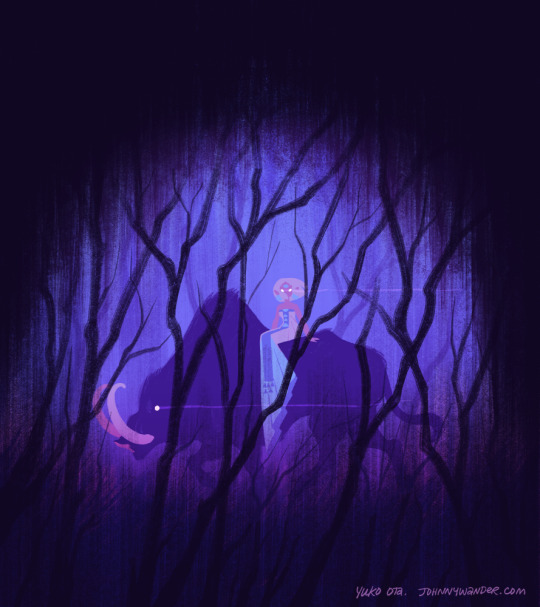
[tears of the kingdom] Rumors of Princess Zelda riding a mountainous beast with brutal tusks...
#totk#tears of the kingdom#loz#zelda#beast ganon#fanart#this quest description lit a fire in my brain and I finally just got back to it
2K notes
·
View notes
Text

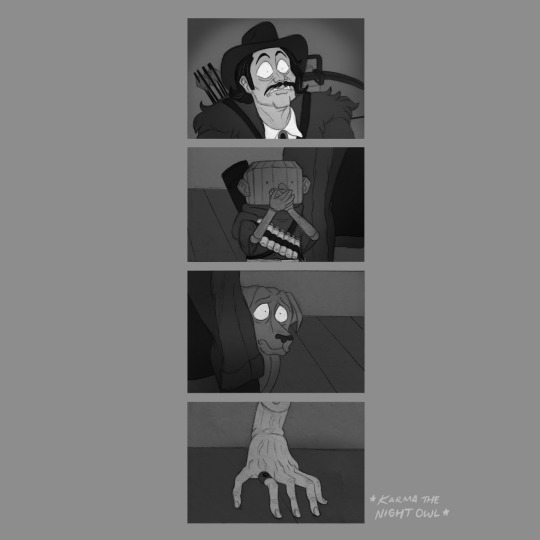

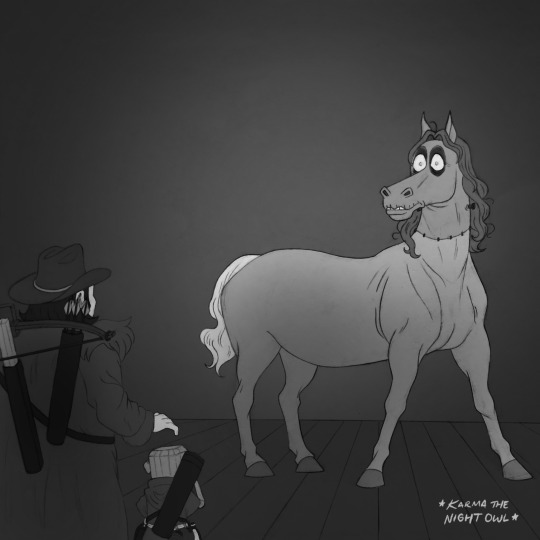

"You fall down to all fours and you heave and arch your back, which doubles in length. Your legs grow and thicken and all end in big, powerful hooves. Your neck stretches, your face stretches as though it were rubber. And you recover and stand up, proudly, on all four hooves. You have turned into a werehorse."
-The Adventure Zone Versus Dracula, Episode 6
#that eps ending kinda traumatized me ngl#forced transformations are one of my biggest fears in horror#and griffin sold it with his description of that scene#i really wanted to convey the horror of that and how i felt through the party's expressions#also when constructing this i was like...#is this like twilight princess rules with wolf link?#or the owl house rules with eda's owl beast form?#so i kinda went with both? with the outline of godwin's clothes kinda fading/melding into her horse body#also wink wink the silhouette pov is a reference to disney's pinocchio#taz vs dracula#the adventure zone#taz versus dracula#cw: body horror#horror art#nightowldraws#lady godwin#werebeast#fanart#horror comics
300 notes
·
View notes
Text
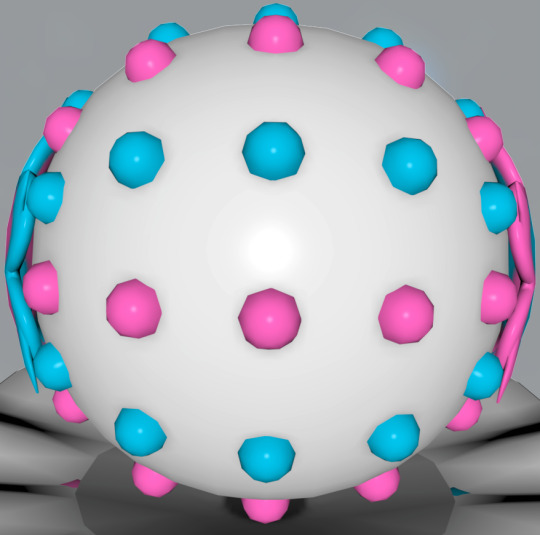
#blacephalon#this one i accidentally queued up way earlier because it's in a different order in the usum regional dex as opposed to the natdex#whoops!! the description does say “in natdex order” so i must keep that consistent. so sorry blacephalon fans but#this is literally the last ultra beast#for some reason. i would expect naganadel to be last but for some reason stakataka and blacephalon come after it#whatever. clown pokémon with no face
221 notes
·
View notes
Text
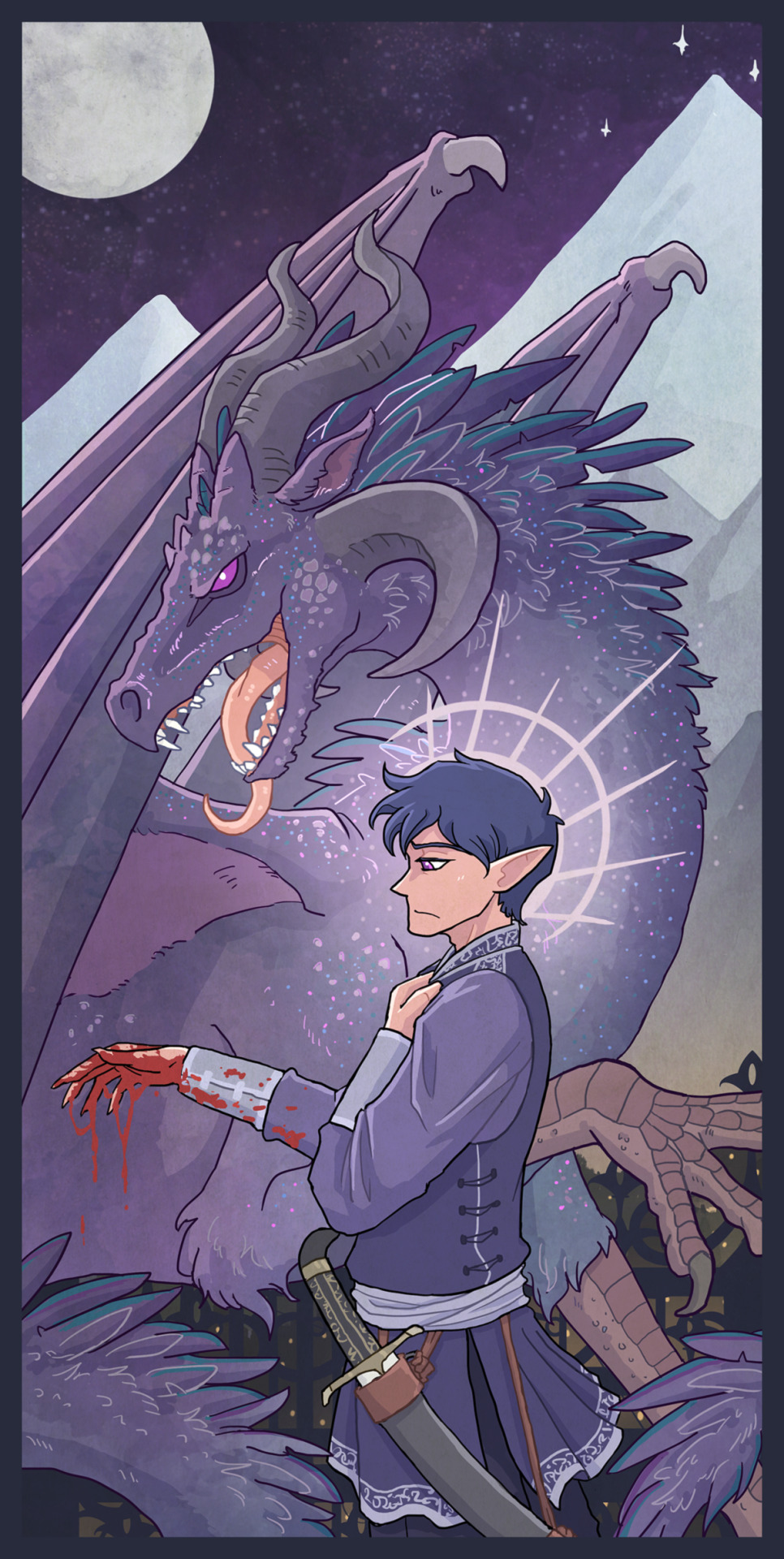
The High Lord of Night for @officialrhysandweek Day 1: Lord of Nightmares
#rhysandweek2023#Acotar#acotar fanart#Rhysand#I really wanted to draw his beast form - which is I suppose his most monstrous#but also how he struggles with doing monstrous things for Amarantha#yes im being very subtle with the whole 'blood on his hands' stuff i know#lol#also yes this is a mirror to my tamlin piece#i'll post them together someday....and maybe do more high lords? mhhh I wish the beast forms had more descriptions haha
410 notes
·
View notes
Text
The explanation for why totk’s story is so Not Great and how disconnected from its predecessor it feels being that the devs didn’t want to alienate new players who didn’t know anything about botw’s story just falls apart the more I think about it. Nothing from this stupid half a plot works unless the player is familiar with specific details from the better games that came before it.
The believability of Link and Zelda’s connection to each other hinges on you knowing about the nuance of their relationship in botw. The ancient sages fighting with the champions’ arms and divine beast helms will only be impactful to botw/aoc players because totk doesn’t bother to explain the significance of that callback at all. Fi’s cameo is meaningless unless you either got every memory in botw or finished the master trial dlc (and know about her from skyward sword). You’ll only get the full context of Teba being sidelined in favour of a 12-year old if you played a specific chapter of Age of Calamity’s second DLC. Like sorry but I think Nintendo just made a bad story tbh
#bluebird.txt#salt of the kingdom#totk critical#yes i do think aoc is better than totk and I’m tired of pretending it isn’t#and In what universe is tarrey town common knowledge among non-fans while the divine beasts are a complete mystery#the mcu-ification of Zelda#also the champions’ weapons and sages’ helmets can’t believe I forgot about those!#if you’d never encountered anything from botw and wanted to know who Revali was after seeing the great eagle bow description#or you wanted to know why the Zora sage wore a helmet shaped like an elephant#you’d be shit outta luck unless you googled that information bc totk sure won’t tell you
467 notes
·
View notes
Text
im sorry yall but i am quite literally only drawing Mystic Spice rn and I'm having a blast HAHA
#I NEED TO TAKE A BREATHER FROM TLOZ FOR A MOMENT I KNOW I JUST THREW THAT HYLIA IDEA AT YOU GUYS-#BUT IK IM STUNTED WITH THE SERIES WHEN I CANT BRAINSTORM DESIGN IDEAS FOR HYLIA </3#so now im just drawing two damn cookies KNDJFKGNDK#txt#wait i wanna rant more on tags but its kind of a shame im not too far deep into the game to reach the beast storylines#cause im only going off what their descriptions have to say </3 ik they dont interact canonically#but just know if those two are in the same scene together i will explode
36 notes
·
View notes
Note
https://youtube.com/shorts/QjIoFZz7M9w?si=Q9FjIdHO93OKR1gZ
Foul legacy core
INCREDIBLY ACCURATE. THANK YOU. i have the urge to list some certified Foul Legacy Noises now
he lets out grumbly chuffs and purrs when he's tired, most of all, too exhausted to make full chirps and trills. that time of day when you're both home from work and flopped over each other, neither of you wanting to move a single inch. occasionally you ask if he needs to get up at all and Foul Legacy just huffs and shakes his head, rolling over to snuggle more insistently against you. do you end up falling asleep and having some of the best rest of your life? absolutely. you're also forever grateful that the next day is a Saturday, since Legacy adamantly refuses to get off until you promise to make him something tasty for breakfast
he squawks when he's startled, jumping almost a foot in the air and narrowly missing smacking his poor head against the ceiling. then he sulks something fierce, letting out small, pouting grumbles and crossing his arms. you have to bite back a snicker, scritching behind his horns in apology, and the quiet growls slowly turn into begrudging chitters, leaning into your hand. you swear that you don't MEAN to sneak up on him- well, it is funny, honestly- and Legacy accepts your apology with a squint before promptly plopping his head into your lap. he did miss you, after all, even if you scared him half to death!!
he whimpers softly, when he's frightened. curling up beneath the blankets and burying his face into your shoulder. your arms wrap around him as much as possible, pressing into his back as he shivers with quiet sobs, nightmares still fresh in his head. his claws dig into your skin- not a lot, just faint pinpricks of pain. they draw no blood, for even in distress he makes sure not to hurt you, and he falls asleep in your embrace, still hiccupping quietly. you only hope that morning brings him some peace. but Childe is a Harbinger- his life is anything but
#genshin impact#childe#tartaglia#foul legacy#foul legacy childe#genshin tartagalia#genshin childe#genshin tartaglia#i am so obsessed with descriptive sounds and sound effects in general#and foul legacy makes a whole lot of them#because i said it and THEREFORE it is true#there's this one mod for subnautica about the gargantuan leviathan#and i love listening to the sound files for its roar#like oh my god that encapsulates enormous eldritch beast so well#i'm going to swim directly into the void and start screaming in fear#wait what were we talking about again#short scenario#other's stuff#good evening#chit chats
24 notes
·
View notes
Text


“Aroace Beast”, my new aroace dragon. A funky dragon based on a lion I saw at the zoo, I hope you still like it!
My original art made in Procreate, image description in alt
#aroace#aroace flag#aroace beast#pride beast#pride dragon#pride art#funky dragon#aspec art#aroace pride flag#pride creature#pride flag art#wave art#beach art#creature art#dragon art#dragon artist#image description in alt#original art#procreate art#human artist#transcendragon art#artists on tumblr#digital art#queer artist#support queer artists#fantasy art#queue should see this#nature#aro#ace
71 notes
·
View notes
Note
(Hi again!)
Just wanted to ask, what gave you the idea to genderbend Sillydillo? Thanks for answering if you do, have a good day!
Hello! :)
Sillydillo in the Roleswap still goes by it/it’s pronouns, just like in the canon gotcha figure descriptions! I just swapped Gorimondo’s anchor necklace with Silly’s street sign aesthetic, and developed the anchor idea into a dramatic dancing pirate :3
Turns out swapping more than just the main characters or Forgotten Land has been extra fun to develop!! :D

#roleswap bonus features#Sillydillo#Gorimondo#beast pack#I know there’s one random he pronoun in the phantom Sillydillo gotcha description too! but since it’s just the one time I’m sticking with it
49 notes
·
View notes
Text
wet beast wednesday

(source)
#rón.txt#hyena therian#therian#wet beast wednesday#alternate description: real photo of me at the beach
34 notes
·
View notes
Note
Well, well, well, what do we have here? An archivist? And what a little liar you are for being in that Cookie form all the time! Must be difficult trying to compile all that information, hm?
Shadow Milk Cookie appears as a mere ghost of his true self, but still himself nonetheless. He's mostly transparent, but is still visible, if only barely. Shouldn't he have more power than that? It doesn't fully make sense for him to show up like this.
Ooh! I know... what if I quiz you right now on why I'm here... like this?
He makes a sweeping gesture as he motions towards himself.
That'd be fun, riiiight?
@i-merely-jest
"Huh. My first time talking to a beast Cookie. I know you guys hate me for being a witch, but this is quite exciting! "
Half-Moon Cookie looks unfazed by the appearance of Shadow Milk Cookie, even a bit excited! They lean in the direction of the beast, hands behind their back and with narrowed eyes (a contrast from their usually happy and curious look) and a sly smile.
"Before we start, I'd like to have you know that I am much, much older than you are. I have more knowledge in my archives that you could ever dream of, Fount of Knowledge. And, I don't like to flaunt it around much, but don't forget; my people created you. Your power is nothing compared to mine. With a snap of my fingers, you could be gone in an instant."
They immedietaly revert back to their usual curious and happy demeanor as if nothing happened.
"Now, shall we begin the game?"
"It's a trick question! My Shadow Milk Cookie is different from you! The Shadow Milk Cookie in my world was locked up away in the Silver Tree by the witches and guarded by Elder Faerie Cookie. But, the beasts still had some influence, like you, Shadow Milk Cookie. You still had some of your power and access to the world through the Dark Side of the Moon."
"You, however? Something else has trapped you here; something that I don't even have full knowledge of. Isn't that something? The Witch of Knowledge and Information not having enough knowledge or information on something? Ha! But, either way, your power has still been limited in the world you're in right now. I'd suggest saving a bit more of your energy, less you tire yourself out!"
#//I love the way you wrote Shmilk in this omg#//also not used to the description style of roleplay bare with me here#//anways Half-Moon lore. They're a witch and they should be againsr the beasts but they're also so knowledge driven#//that they treat everything neutrally. The little power-thing they did here was to let Shmilk know that he shouldn't try anything#//He doesn't like to brag about her power much#half moon cookie talks#half moon cookie answers#cookie run kingdom#cookie run#crk#crk roleplay#cookie run kingdom roleplay#cookie archives#cookie run roleplay#cookie run rp#cookie run kingdom rp#crk rp#cr rp#shadow milk cookie#cookie run au
17 notes
·
View notes
Text



i don't do a lot of traditional painting these days, but i made this recently as a housewarming gift! it's based on the medieval unicorn tapestries, and i'm pretty pleased with it
#medieval unicorns are so funny#wonky little beasts#image description in alt text#traditional art#art#unicorn tapestries#not fanart
42 notes
·
View notes
Text
Wet Beast Wednesday: emperor penguin
This is the last Wet Beast Wednesday before Christmas and Christmas is associated with the north pole thanks to Santa. So to celebrate the season, I'm going about as far away from the north pole as it is possible to go and talking about the emperor penguin. This also happens to be the first dinosaur I've showcased on this series.
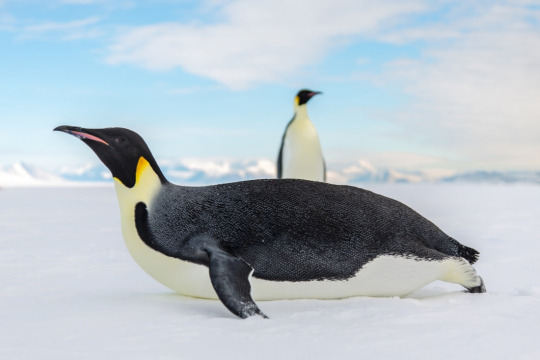
(image id: an emperor penguin lying belly-down on ice, seen from the side. Its back, wings, and head are black while its belly and neck are white. It has a patch of orange feathers near the ears. Another penguin is standing up in the background. end id)
Aptenodytes forsteri is the largest of all penguins and the sixth largest (by weight) bird in the world, only surpassed by the emu and two species each of the cassowary and ostrich. Those are all paleognaths, one of two living groups of birds, making the emperor penguin the largest of the other group: the neognaths. There are some discrepancies on their size due to the standards of bird measurement, but recent measurements list their standing height as reaching 120 cm (3.9 ft) with a weight of 22.7 to 45.4 kg (50 to 100 lbs). Their weight varies a lot during their lives, with both males and females losing a lot of weight during breeding season. Males generally weigh more than females. Genomic and anatomical analysis indicates that the emperor penguin, along with the closely-related king penguin and an extinct species, are part of a group of penguins that branched off of the family tree before the other living penguin species. As with other penguin species, they are heavily adapted for life in the water. All penguins are flightless, with their wings having adapted into flippers used for swimming. Penguins stand differently than other birds. Most birds have long legs and hold their bodies horizontally to the ground or at an angle, but penguins have short legs and hold their bodies vertically, like humans do. This, plus other adaptations, helps streamline the birds, letting them swim more efficiently. Like other seabirds, their feathers are very dense and coated with oil that repels water. This keeps the feathers from becoming waterlogged, reducing drag and helping keep the bird warm. During molting season, the feathers emerge from the skin mostly formed and push out the old feathers, preventing the penguin from developing bald or thin patched that would compromise insulation. While the feathers are responsible for most of the insulation, a layer of fat also helps. Like other birds, penguins are endothermic, commonly known as warm-blooded. Penguin tongues have backward-pointing barbs that help prevent food from escaping their mouths.
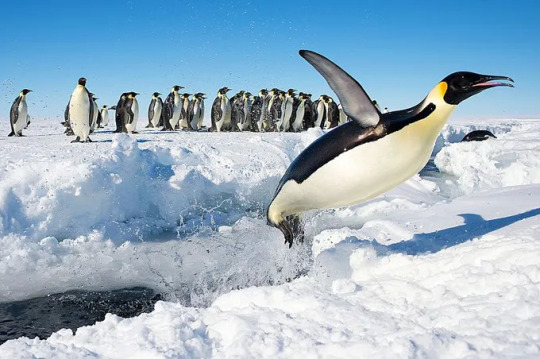
(image id: an emperor penguin jumping out of the water and onto ice. It is pictured in midair with its body roughly parallel to the ground and wings extended. Multiple other penguins are in the background. end id)
Emperor penguin's divide their year between the breeding season and the rest of their lives. During most of the year, they spend their time searching for food. Most of this food consists of fish, krill, and squid. Emperor penguins are social animals that often coordinate with each other to hunt in groups. While hunting, they will dive up to 535 meters (1,755 ft) and spend up to 21 minutes underwater before surfacing to breathe. During dives, the pressure can increase up to 40 times and the emperor penguin has some special adaptations to cope. Unlike most birds, emperor penguin bones are solid, reducing the chance of one breaking under pressure. During dives, the heartbeat slows dramatically and non-essential organs cease functioning to conserve oxygen in the blood. In addition, the hemoglobin in the red blood cells is modified to carry more oxygen in high pressure and low temperature. While on land, emperor penguins gather in colonies along the shoreline. Members of the colonies spend a lot of them time huddled against each other to keep warm. The penguins live all around Antarctica between 66 and 77 degrees southern latitude.
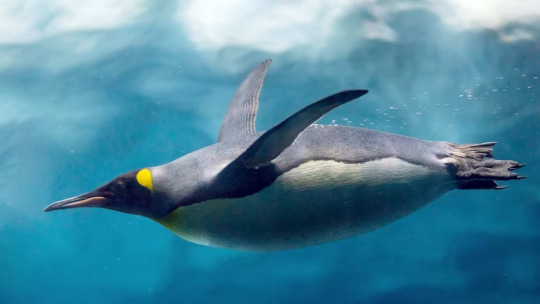
(image: an emperor penguin swimming underwater. Its head is pointed up, making its body very streamlines. Its wings are extended and are used for propulsion and steering. end id)
The thing emperor penguins are most famous for is their breeding behavior. Breeding season starts at the beginning of winter in Antarctica, between March and April, and is triggered by the decrease in day length. Penguin colonies travel inland en masse moving between 50 and 120 km (31 to 75 miles) to find a spot to raise their chicks. These spots are usually large, flat patches of sea or lake ice with a barrier such as a cliff or iceberg used to block the wind. Males perform sexual displays wherein they make loud courtship calls while wandering around the colony. When a female is interested, she will face they male and they will both hold their heads up for a few minutes. Once a pair os formed, they will walk around the colony together. When ready to mate, The pair will bow to each other. Emperor penguins are serially monogamous. They will only mate with one other penguin each season, but rarely pick the same mate more than once. The pair say together until the egg is laid in late May or early June. The female then transfers the egg (only one is laid every year) to the male, a tricky process. They have to use their feet to transfer the egg without dropping it. If the egg breaks or is exposed to the ice for more than a minute or so, it will die. It is not uncommon for an egg to be lost, especially in first-time parents. If this happens, both parents will leave the colony and return to the sea, not mating again until next year. The male balances the egg on his feet and covers it with a loose flap of skin. The bottom of this skin is a featherless patch called the brood patch that only forms during this season. By keeping the egg between his feet and the brood patch, the male incubates it. Once the egg is transferred, the female returns to the sea, leaving the male responsible for the next few months. In every other penguin species, the mother and father take turns incubating their egg. for the next 65-75 days, the male will incubate the egg in the middle of the Antarctic winter, where storms are frequent and temperatures can can reach into the -60s C (-70s F). He will not eat at all during this period, which, including travel and mating time, can last for 120 days. Males can lose up to half of their body mass during this fast. If the egg is dropped even once, it has a very high chance of dying. Walking without dropping the egg is tricky, but the males will form tight bunches to conserve body heat. These bunches are mobile, with members to the outside gradually moving inward and vice-versa. The egg usually hatches after around 60 days and it can take a few days to break out of its shell, which is thicker than in most bird species. The chicks are born featherless and will freeze to death if they leave the male's brood pouch. The male produces a substance called crop milk with a gland in his esophagus. Crop milk is unique to pigeons, flamingos, and male emperor penguins and is used to feed the chick. The crop milk does not provide full nourishment to the chick, but will keep it alive for about a week.
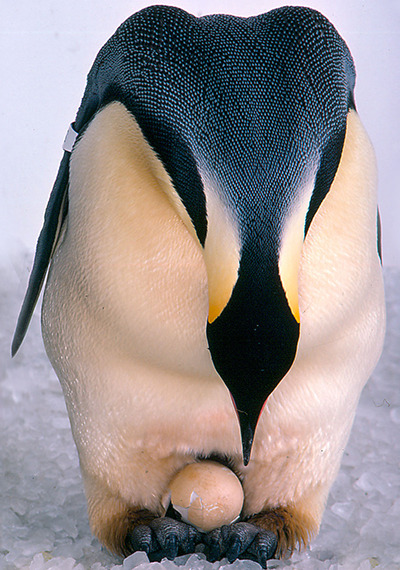
(image id: a male emperor penguin standing on ice with its egg balanced on its feet. The skin flap thet normally covers the egg is pulled back and the male is bending over to examine the egg. This egg is broken, possibly the result of being dropped, and is non-viable. end id)

(image id: a newly-hatched emperor penguin sitting on it's father's feet. It is very small and featherless, with grey skin and a black head. end id)
About this time, the female will return from her time at sea. She spent this time feeding and fattening herself up for the next leg of the parenting journey. She returns to the colony usually between 5 and 10 days after the hatching. If she arrives too late, the chick will starve. Once she arrives, she will locate her mate through the sound of his calls. The male then transfers the chick to the female's brood pouch and returns to the sea to feed and put weight on for another 3-4 weeks. The female will feed the chick by regurgitating half-digested food into its mouth. After this, the mother and father will take turns brooding the chick and feeding at sea. If either parent is delayed or dies, the chick will die as the remaining parent will eventually abandon it and return to sea. Orphaned chicks will try to seek food and shelter from other adults and mothers who have lost a chick may try to adopt an abandoned one, but as a single parent cannot raise a chick alone, it will eventually be abandoned as the adult goes to feed. Sometimes, a mother who lost her chick will attempt to steal a chick from another mother. This leads to fights over chicks that may leave chick trampled to death.
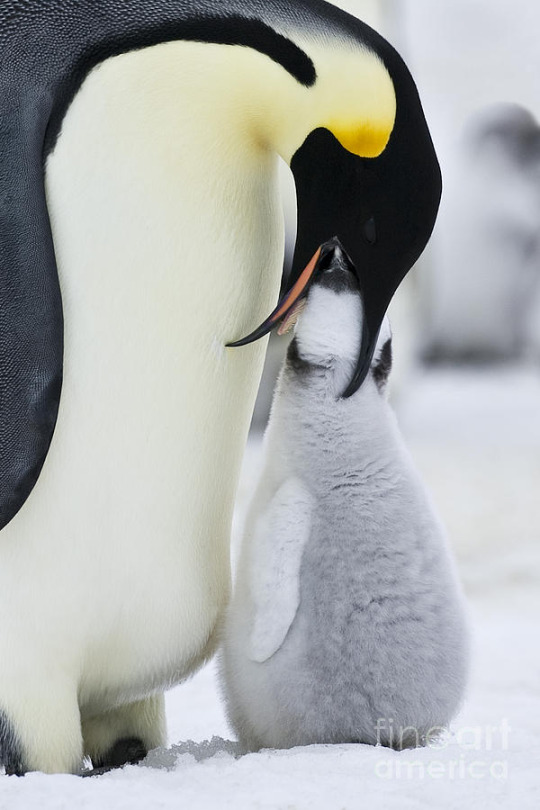
(image id: an adult emperor penguin feeding its chick. The chick is larger and covered in fluffy, grey, downy feathers. It no longer needs to stay on its parent's feet. The adult is looking down at the chick with its mouth open. The chick has its head inside the adult's mouth. end id)
Starting 45-50 days after hatching, the chicks now have a thick enough coat of down to survive outside of the brood pouch. Starting around this time, both parents will return to the sea and occasionally return to bring food, using the sound of their chick's vocalizations to track them down. When the parents are gone, the chick huddle together for warmth. Starting in early November, the chicks will start gaining their adult plumage and the adults will stop returning to feed them. Once they get hungry enough, the chicks will make the trip to the sea (which is shorter now as it is summer in the Antarctic and the sea ice has receded) and will be independent from now on. Only 15% of chicks survive their first year, but after that the survival rate is 95%, meaning most living emperor penguins are adults. Emperor penguins reach sexual maturity at 3 years, but most do not mate until they are 4-6 years old. The average lifespan of those who live long enough to reach adulthood is 20 years, but may live up to 50 years. The high survival rate of adults is in part due to a lack of predators. Adult emperor penguins are only hunted by leopard seals and orcas, though the former prefer juveniles. Juveniles are preyed upon by seals when they reach the water and by southern great petrels when on the ice. Adult emperor penguins lack any land predators, which has resulted in them having no prey response when on land. Scientists and antarctic explorers have reported that adults will approach them without fear.
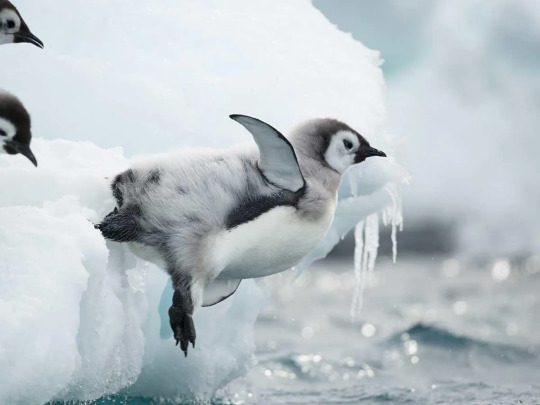
(image id: a newly-independent chick entering the water for the first time. It has not yet fully developed its adult plumage and has a mix of the chick's fluffy down and an adult's smoother coat. It is jumping off a ledge of ice into the water. Two other chicks watch from the side of the image. end id)
Emperor penguins are classified as near threatened by the IUCN, meaning they are losing population and may slip down into threatened status if conservation measures are not taken. The largest threat to emperor penguins is global warming reducing their habitat. Because they need sea ice to lay eggs and brood, the loss of sea ice every year has reduced the ability of the penguins to reproduce. in 2022, loss of sea ice led to a catastrophic failure to reproduce among nearly all known colonies. It is now estimated that 90% of colonies are at risk of dying out due to the loss of sea ice. If these trends are not reverted by reduction of global warming, the penguins could face extinction.

(Image id: two emperor penguins with their chick. The adults are standing behind the chick, which has its downy juvenile plumage. The chick stands about half the height of the parents. end id)
#wet beast wednesday#emperor penguin#penguin#marine biology#biology#zoology#ecology#animal facts#marine life#good parenting#cute#image description
123 notes
·
View notes
Text




62 notes
·
View notes